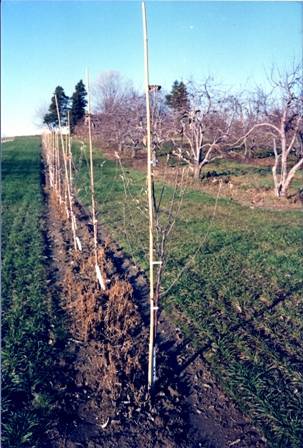The Complete Guide to Bamboo Tree Stakes: Benefits and Techniques
Whether you are a new gardener or a seasoned landscaper, using the right support system is crucial for young and growing trees. Bamboo tree stakes stand out as an environmentally friendly, durable, and affordable option to help your plants thrive. In this guide, we will explore everything you need to know about bamboo tree stakes—from how they work and why they are beneficial to step-by-step installation techniques and maintenance tips. By the end, you will have all the insights and practical advice necessary to ensure your trees grow strong and steady.

What Are Bamboo Tree Stakes?
Definition and Purpose
Bamboo tree stakes are simply poles made from bamboo that provide support to trees and large plants. In essence, they keep the trunk upright, promote healthy root development, and protect young saplings from wind damage or leaning. Because bamboo is naturally sturdy yet flexible, it serves as an ideal material to guide and stabilize growing plants without hindering their natural development.
Popularity in Gardening
Bamboo tree stakes have steadily gained popularity among gardeners and landscapers alike. According to the National Gardening Association, properly staked young trees can have up to a 25% higher survival rate in their first year compared to unstaked ones. Given the numerous advantages bamboo stakes offer—alongside their eco-friendly nature—it’s no wonder they are a preferred choice.
Key Benefits of Bamboo Tree Stakes
Durability and Strength
One of bamboo’s most celebrated features is its remarkable strength-to-weight ratio. Despite being lightweight, bamboo can withstand considerable pressure and harsh environmental conditions. This makes it reliable for supporting both small saplings and more mature trees that need extra reinforcement.
Eco-Friendly and Sustainable
Bamboo is one of the fastest-growing plants on the planet. Unlike traditional wooden stakes that come from slow-growing hardwoods, bamboo can regenerate quickly, requiring less land and fewer resources to produce. By choosing bamboo tree stakes, you’re opting for a renewable material that has a low environmental impact, helping you maintain an eco-conscious garden or landscape.
Cost-Effective Choice
The combination of durability and renewability makes bamboo an economical option. Because it can be harvested frequently and in large quantities, bamboo is usually more affordable than many types of treated lumber. Additionally, high-quality bamboo stakes can last multiple seasons, further reducing long-term costs.
How to Select the Right Bamboo Tree Stakes
Height and Thickness
Picking the right size bamboo stake largely depends on the type of plant or tree you’re supporting. As a general rule:
- Height: The stake should be at least two-thirds of the tree’s height. For larger trees, choose a stake that reaches just below the lowest branches.
- Thickness: Thicker stakes (around 1 inch in diameter or more) are suitable for bigger saplings and shrubs, while thinner stakes (½ inch or less) work well for smaller plants.
Quality Assessment
Not all bamboo stakes are created equal. When shopping, look for:
- Smooth, uncracked surfaces to reduce the chance of pests and diseases.
- Sturdy poles with minimal bending or warping.
- Solid color without signs of mold or discoloration.
Spending a little extra on higher-quality bamboo tree stakes can save you the time, money, and frustration of replacing stakes prematurely.
Techniques for Installing Bamboo Tree Stakes
Tools and Materials Needed
Before you begin, gather the following:
- Bamboo tree stakes (in appropriate size and number)
- Hammer or mallet
- Soft, flexible ties or tree straps (avoid damaging materials like wire)
- Measuring tape (optional)
Step-by-Step Installation Guide
- Position the Stake: Place the bamboo stake in the ground on the windward side of the tree, a few inches from the trunk. This ensures the trunk leans slightly away from prevailing winds, helping maintain stability.
- Drive the Stake: Use a hammer or mallet to drive the stake approximately a third of its length into the soil. Aim for a stable insertion to prevent shifting in strong winds.
- Check Alignment: Ensure the stake is upright and close enough to the trunk to provide support without rubbing against the bark.
- Repeat if Needed: For larger or more delicate trees, you may use two or three stakes arranged around the trunk. Tie each stake to the tree to distribute support evenly.
Proper Tie and Support Methods
- Choose the Right Ties: Select materials like nylon webbing, soft cloth, or specialized tree ties that won’t cut into the bark.
- Looping Technique: Gently wrap the tie around the trunk and stake in a figure-eight pattern to minimize direct friction. This approach allows the tree some natural movement while preventing harmful rubbing.
- Secure in Place: Knot the tie firmly but not tightly. The trunk should be held securely without restricting growth or circulation.
Maintenance and Reusability
Regular Inspection
To ensure ongoing stability:
- Check ties every few weeks to make sure they aren’t digging into the bark.
- Examine stakes for signs of rot, splitting, or insect damage.
- Adjust ties or stake positions as the tree grows and its center of gravity shifts.
Cleaning and Storage
When your plants are stable enough to stand without stakes, remove the bamboo supports for future use:
- Clean Off Soil: Gently remove dirt and debris with a damp cloth or brush.
- Sun-Dry or Air-Dry: Allow the stakes to dry thoroughly before storing them to prevent mold or mildew growth.
- Store in a Dry Location: Keep them off the ground in a cool, well-ventilated area such as a garden shed or garage.
With proper care, bamboo tree stakes can be reused multiple times, making them an even more cost-effective solution.
Common Mistakes to Avoid
Over-Staking or Under-Staking
While staking can be beneficial, applying too many stakes or leaving them in place for too long can impair root development. Conversely, under-staking can result in insufficient support and potential tree damage. Aim for a balanced approach that helps your tree stand firm but still allows some natural swaying, which is essential for healthy root growth.
Improper Tie Pressure
Ties that are too tight can constrict the trunk and hinder the tree’s growth. Overly loose ties, on the other hand, won’t offer enough support. Strive for a snug but flexible fit, and inspect frequently to accommodate growth spurts.
Conclusion
Bamboo tree stakes provide a solid, eco-friendly foundation for your plants and trees, ensuring they stand tall and grow robustly. By selecting the right stake size, installing it correctly, and maintaining it responsibly, you will foster healthy plant development while minimizing long-term expenses. Now that you’re equipped with tips and techniques, it’s time to put them into practice. Share your experience, ask questions, or offer additional insights in the comments below, and don’t forget to pass this guide along to fellow gardeners. Your journey to healthier, more vibrant trees begins with a single bamboo stake—let’s get started!

